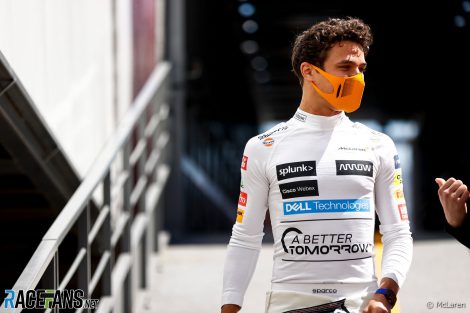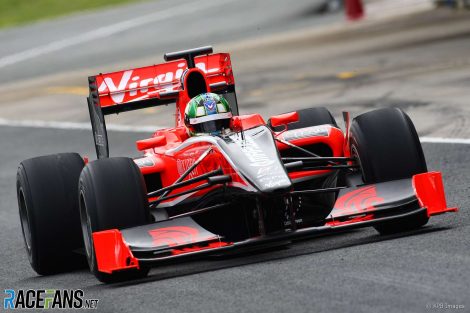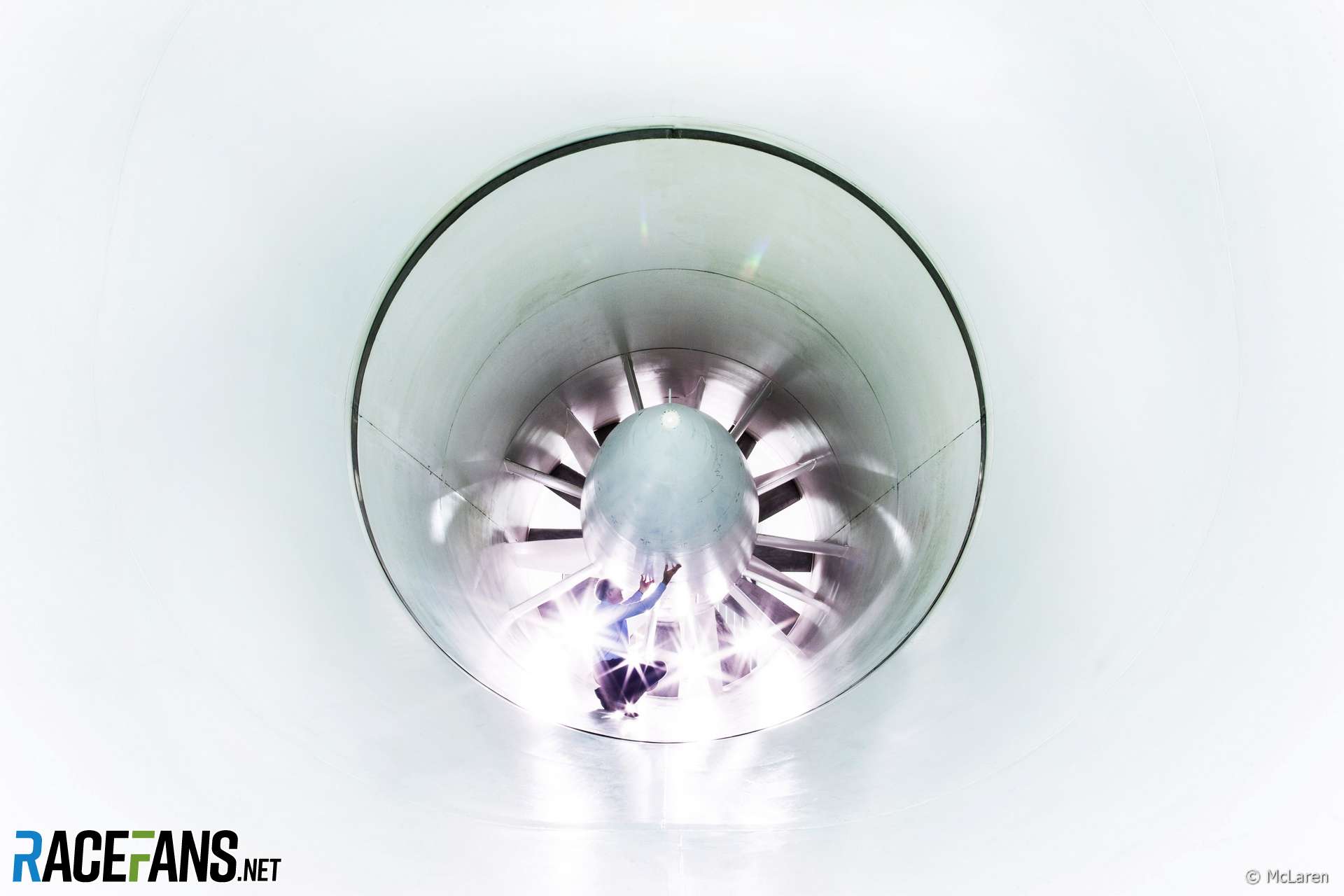When asked why he had committed to McLaren – allegedly until end-2024 – by RaceFans during an interview in Monaco on Thursday, Lando Norris listed the team’s plans to build a new wind tunnel as one of “a combination of a few things over the past couple of years that we’ve done, but then also things that we have coming up in the future.
“I guess having our own wind tunnel is one of the biggest things,” he continued, adding, it would be much easier for “the guys and girls who travel all the way to [Toyota’s facility in] Germany every time and go to the wind tunnel, spend time in isolation, there for three weeks, come back and spend time in isolation again and so on. We lose a lot of time compared to other teams who are able to do it a lot quicker.”Wind tunnels are extremely costly pieces of kit, not only to install but also to maintain and operate. A team is unlikely to obtain much change from $60 million (£42.4m) for a turnkey project, and even upgrading existing facilities to state-of-art costs at least half that. Then there are the annual operating costs: Aston Martin’s Otmar Szafnauer reckons on around $10m to run a tunnel and keep it fed with scale models.

Now, though comes the rub: plans are afoot to ban wind tunnel usage in Formula 1 totally by 2030. F1 chief technical officer Pat Symonds recently claimed eight of the 10 teams favour such a ban once computational fluid dynamics is able to deliver accurate results. Symonds reckons that tunnels require up to 3000kW to drive the air at full speed, resulting in electricity bills of over $1m annually.
Indeed, the six team bosses present during the FIA’s pre-race press conference to greater or lesser degrees indicated their support for such a ban, although some did express caveats.
“If it helps curb the costs obviously it’s a good measure,” Alpine’s CEO Laurent Rossi said, although he did wonder “what the the CFD to track reliability is, and I think we’re not there yet, to the point that we can just get rid of the wind tunnel altogether.” Mercedes F1 team boss Toto Wolff concurred.
Advert | Become a RaceFans supporter and
Mattia Binotto of Ferrari told the conference that, “It’s a long time from now to [2030]. I think all the teams are open to the discussion, and open to accept it eventually because it’s a long time from now. Are we today ready to ban the wind tunnel? Not at all.

The most intriguing response was, however, provided by Red Bull’s Christian Horner, who said he had “brought up [the topic] a few months ago to take a longer-term view because a wind tunnel isn’t particularly efficient, it’s not very environmentally-friendly and with the world evolving in simulations, the tools, the way that CFD is evolving so rapidly.”
He believes F1 should “take a 10-year view on this, so it’s far enough out that these effectively dinosaurs of machinery that are heavily consuming electricity and power become a thing of the past, and Formula 1 should be the cutting edge of technology.”
He cited the (Red Bull-developed) Aston Martin Valkyrie supercar as example of what could be achieved without wind tunnels. “It never went in a wind tunnel once during its whole development phase.” Given the team’s chief technical officer Adrian Newey ranks as F1’s pre-eminent aerodynamicist, Red Bull will have considered the full implications of an outright ban extremely carefully.
Tellingly, Andreas Seidl of McLaren – about to build a new wind tunnel, remember – “fully agrees with Christian.”
Advert | Become a RaceFans supporter and
He said McLaren supported the plan provided there is “a good medium- to long-term plan in place with a glide path of introducing this. At the moment we are discussing, at the earliest, introduction of banning the wind tunnels from 2030 onwards, which is something we support as well.”

Over 10 years on, two teams, namely Aston Martin and McLaren, have concrete plans to spend tens of millions in whatever currency on building wind tunnels in the short-term despite the ban potentially being imposed in less than 10 years, thus committing (a conservative) $150m in construction and operating on new facilities. This suggests that they lack full confidence in CFD as feasible alternative.
As Binotto said, 2030 is some time off, but in F1 eight years pass in a flash – as the introduction of the current hybrid engines proves: that was eight years ago, when Lewis Hamilton was still a one-time champion. In practical terms 2030 may be too soon for a total switch to CFD, yet delays could entice teams to invest in costly upgrades for existing tunnels or build new ones – in turn making a ban more complicated.
Thus, as always, F1 has no time to lose. Any delays could cost tens of millions, which would in turn make a total mockery of any cost-saving ideals.
2021 F1 season
- Verdict on error in GT race suggests Mercedes would have lost 2021 Abu Dhabi GP appeal
- Title ‘stolen’ from Mercedes made us ‘underdogs people cheer for’ – Wolff
- Red Bull Racing spent £230m during Verstappen’s title-winning 2021 campaign
- ‘I can’t box?’: Hamilton and Verstappen’s 2021 Abu Dhabi GP radio transcript
- Abu Dhabi’s legacy one year on: How the controversial 2021 finale changed F1





Michael
23rd May 2021, 10:21
What was wrong with the old wind tunnel at the McLaren Technology centre? Did it just never work properly – it must have only been in use for about 5-6 years if they’ve been using Cologne for 10 years?
bernasaurus (@bernasaurus)
23rd May 2021, 10:51
My understanding is that it was integrated into the MTC (Ron’s beloved Technology Centre), and as technology or width of the cars changed, it couldn’t be updated or ‘upsized’ as it was encompassed by the rest of the building.
So it was more convenient to just use Cologne (as many others have done). I might be wrong though, I don’t know if it ever became fully redundant, they might still be using the old one now for certain components, but my understanding is that it’s too small by modern standards.
anon
23rd May 2021, 11:41
Michael, it is not uncommon for teams to use a second wind tunnel, either to run back to back tests in parallel or as a means of calibrating their own wind tunnel. I do not think that they have been using the Cologne tunnel exclusively, but rather in combination with their own (which is actually fairly common across the grid – Toyota’s had a fairly successful business in leasing time at their wind tunnel to other teams since they left Formula 1).
In the case of McLaren, it seems the main reason for upgrading the wind tunnel is so they can run 60% scale models, as they are currently limited to a 50% scale model. The current tunnel was originally designed to run a 60% model, but that was based on the 1,800mm wide cars that were in use 15-20 years ago, which would have resulted in a 1,080mm wide model.
The increase in width to 2,000mm means a 60% model would now be 1,200mm in width, which would create problems with excessive choking of the flow around the model in the wind tunnel – hence the need to drop the model size to 50% (1,000mm), for which Pirelli can still manufacture scale tyres for use in the wind tunnel as well (some other teams still use 50% models too).
Dieter, with regards to the discussion on the energy consumption of a wind tunnel – if current wind tunnels require about 3MW to operate, has anybody indicated how much power would be required to operate an equivalent supercomputer to design the cars purely based on CFD?
Large data centres often require several MW of power to operate, and the question of the energy consumption of large data centres is a topic of debate too – current data centres use around 200 TWh of energy per year, around 1% of total global electricity demands, and it’s been pointed out that bodies like Google now use more energy than some nation states. Would power demands drop that significantly if a CFD only approach was adopted, or would it stay fairly similar in practice? Would it really cut energy demands, or possibly just make it look lower by outsourcing the problem to a third party instead?
I am also curious about the suggestion by Horner that there was no wind tunnel testing of the Valkyrie, as accounts on that seem a bit contradictory. I’ve seen some articles that commented that wind tunnel testing was taking place on that car, though it is possible that the wind tunnel testing occurred outside of the period during which Newey was involved.
Eric Rocheteau
23rd May 2021, 11:20
At McLaren the wind tunnel is also used by McLaren Automotive and McLaren Applied, not just by Racing. There were plans to build a 3rd building at MTC (expanding on MPC) several years ago but that did not go through. Centerpiece was a new wind tunnel
Tristan (@skipgamer)
23rd May 2021, 12:21
I doubt you care but I think it would be better to release such news articles between races when the news is low and not much is flying around other than rehashed quotes from the weekend.
I’ll be impressed if fluid dynamics will be completely solved in 10 years to the point of not needing wind tunnels. Makes me wonder when we’ll see the first racing simulations with real time fluid dynamics.
Robert
23rd May 2021, 13:19
Why are cost savings still used as an argument when discussing any changes when teams now have to operate under a budget cap anyway? Let them spend their cash in whatever way they think is best for them.